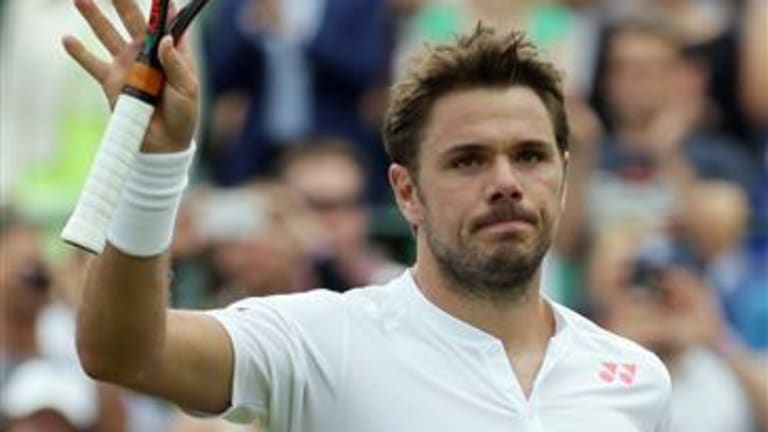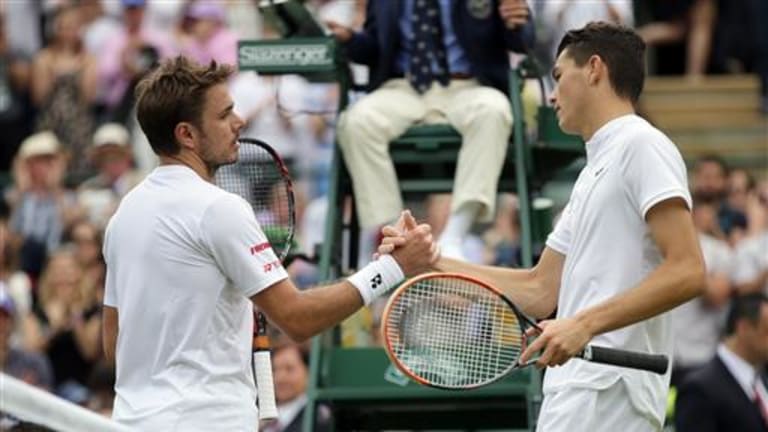Taylor Fritz has had, over the course of the spring and summer, an excellent and highly Instagrammable European adventure. He has strolled the streets of the Continent’s historic cities. He has watched a Champions League match from a private lounge in Madrid. He has posed in a fashion shoot for Paris Match, and in a more-fashionable suit and tie for London’s *Daily Mail*. The 18-year-old from Southern California got so into this trip that he proposed to his girlfriend, Racquel Pedraza, a few feet from the Eiffel Tower.
Tennis-wise, though, the last two months of Fritz’s life have been more of a reality check than a dream come true. Granted, he came within a couple of shots of beating Roger Federer in Stuttgart, which would have been something for he and Pedraza to tell the grandkids. But after soaring 600 spots in the rankings to a career-high No. 63 two weeks ago, Fritz has reached a plateau. Since the Miami Open, he has lost in qualifying twice, the first round four times and the second round twice.
That kind of correction is to be expected when a hard-court-loving American makes his first extended trip to play on European clay and grass. He still has a lot to learn about the surfaces, his opponents and life on the road. Unlike the California player he is often compared to, Pete Sampras, Fritz doesn’t seem destined to win the U.S. Open at 19. Nobody is these days.
On Tuesday, Fritz reached the end of his European road when he faced No. 4 seed Stan Wawrinka on Court 1 at Wimbledon. For the most part, Fritz acquitted himself well in a 7-6 (4), 6-1, 6-7 (2), 6-4 loss. He pushed Wawrinka to a first-set tiebreaker, and briefly grabbed control of the match at the end of the third set. Most impressive was the way he refused to fold in the fourth. After falling behind 0-4 and hearing the Wimbledon crowd go silent, Fritz dug a little deeper, broke Wawrinka for the first time, and forced him to serve it out at 5-4.

